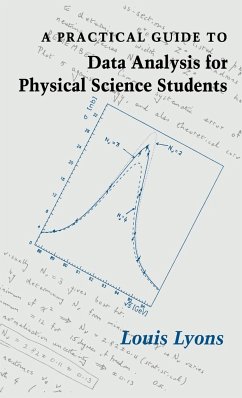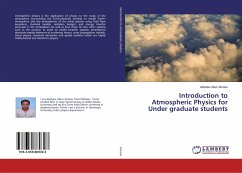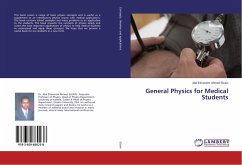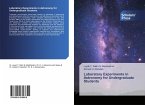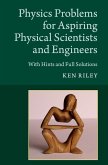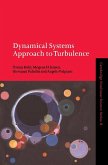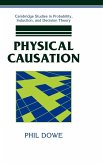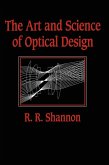It is usually straightforward to calculate the result of a practical experiment in the laboratory. Estimating the accuracy of that result is often regarded by students as an obscure and tedious routine, involving much arithmetic. An estimate of the error is, however, an integral part of the presentation of the results of experiments. This textbook is intended for undergraduates who are carrying out laboratory experiments in the physical sciences for the first time. It is a practical guide on how to analyse data and estimate errors. The necessary formulas for performing calculations are given, and the ideas behind them are explained, although this is not a formal text on statistics. Specific examples are worked through step by step in the text. Emphasis is placed on the need to think about whether a calculated error is sensible. At first students should take this book with them to the laboratory, and the format is intended to make this convenient. The book will provide the necessary understanding of what is involved, should inspire confidence in the method of estimating errors, and enable numerical calculations without too much effort. The author's aim is to make practical classes more enjoyable. Students who use this book will be able to complete their calculations quickly and confidently, leaving time to appreciate the basic physical ideas involved in the experiments.
Table of contents:
Preface; Glossary; 1. Experimental errors; 1.1. Why estimate errors?; 1.2. Random and systematic errors; 1.3. Distributions; 1.4. Mean and variance; 1.5. Gaussian distribution; 1.6. The meaning of s; 1.7. Combining errors; 1.8. Systematic errors; 1.9. An example including random and systematic errors; 1.10. Combining results of different experiments; 1.11. Worked examples; 1.12. Does it feel right?; 2. Least squares fitting; 2.1. What are we trying to do; 2.2. Weighted sum of squares; 2.3. Determining the parameters; 2.4. The error on the gradient and the intercept; 2.5. Other examples; 2.6. Observed numbers; 2.7. Parameter testing; 2.8. Distribution testing; 2.9. Worked example of a straight line fit; 2.10. Summary of straight line fitting; Problems; Appendices.
This textbook is intended for undergraduates who are carrying out laboratory experiments in the physical sciences for the first time. It is a practical guide on how to analyse data and estimate errors. The necessary formulas for performing calculations are given, and the ideas behind them are explained, although this is not a formal text on statistics.
A textbook for undergraduates carrying out laboratory experiments in the physical sciences. The author's aim is to make practical classes more enjoyable.
Hinweis: Dieser Artikel kann nur an eine deutsche Lieferadresse ausgeliefert werden.
Table of contents:
Preface; Glossary; 1. Experimental errors; 1.1. Why estimate errors?; 1.2. Random and systematic errors; 1.3. Distributions; 1.4. Mean and variance; 1.5. Gaussian distribution; 1.6. The meaning of s; 1.7. Combining errors; 1.8. Systematic errors; 1.9. An example including random and systematic errors; 1.10. Combining results of different experiments; 1.11. Worked examples; 1.12. Does it feel right?; 2. Least squares fitting; 2.1. What are we trying to do; 2.2. Weighted sum of squares; 2.3. Determining the parameters; 2.4. The error on the gradient and the intercept; 2.5. Other examples; 2.6. Observed numbers; 2.7. Parameter testing; 2.8. Distribution testing; 2.9. Worked example of a straight line fit; 2.10. Summary of straight line fitting; Problems; Appendices.
This textbook is intended for undergraduates who are carrying out laboratory experiments in the physical sciences for the first time. It is a practical guide on how to analyse data and estimate errors. The necessary formulas for performing calculations are given, and the ideas behind them are explained, although this is not a formal text on statistics.
A textbook for undergraduates carrying out laboratory experiments in the physical sciences. The author's aim is to make practical classes more enjoyable.
Hinweis: Dieser Artikel kann nur an eine deutsche Lieferadresse ausgeliefert werden.

